Last Wednesday, Kidbox’s board of directors convened at the company’s headquarters in New York. They had gathered to advise the company on its product development strategy and corporate social responsibility projects for the next year. Importantly, there was candy: On a table in the conference room, glass jars brimmed with gummy frogs, tiny banana sweets, and Hershey kisses. When you’re a board member under the age of 13, the snacks are kind of a big deal.
Kidbox launched in 2015 as a kind of Stitchfix for kids. The platform works like this: Parents input their child’s size and fashion preferences into a questionnaire, then through a combination of machine learning, data science, and human curation, the company sends them a box of seven clothes every other month, for the price of $98. The company serves newborns to pre-teens, and pulls from 120 brands like Levi’s, DKNY, and Nanette Lepore. It’s a clever concept, since many parents don’t have time to go shopping every time their child has a growth spurt or the seasons change. While it does not disclose how many customers it has, Kidbox appears to be growing fast and received a $15.3 million infusion of cash in Series B funding this April to continue expanding.
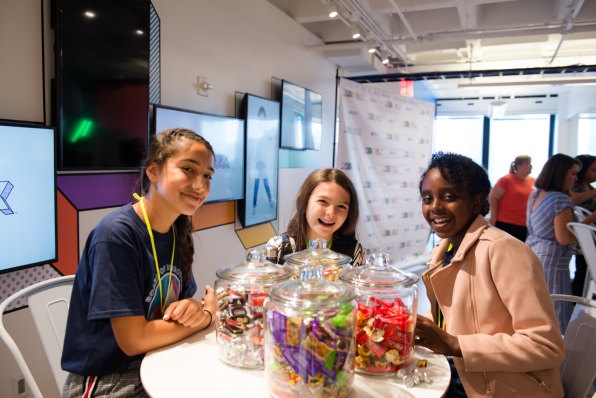
Kidbox also has a social mission: Every time a customer keeps a full box of clothes, they can pick a charity to which Kidbox will donate a kid’s outfit. “An unintended consequence of this program is that parents are starting a conversation with their children about giving back earlier than they would have otherwise,” says Miki Berardelli, Kidbox’s CEO. “That’s the emotional currency that is a differentiator for us.”
There are several other brands with similar concepts, including Mac & Mia, which sends parents higher-end brands, and Rockets of Awesome, which manufactures all the clothes it puts in the boxes. Old Navy and Fabletics have their own kids’ subscription services called Superbox and Fabkids, respectively. And Stitch Fix has also announced that it is getting into kids’ boxes. “We’re excited that there are other concepts on the market,” says Berardelli. “It really speaks to this new landscape of retail. This is now the way we shop.”
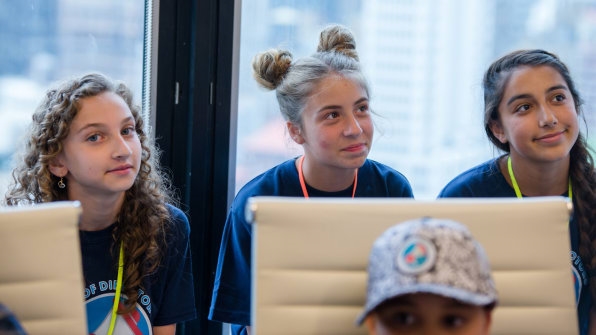
As the market heats up, Kidbox is arming itself to take on the competition by bringing kids’ voices and points of view into almost every part of the business. Hence: the kids’ board of directors. It began the kids’ board program last year, and this is the second time it has brought them to New York for the annual meeting. This year, Kidbox handpicked 12 board members from a pool of hundreds of applicants based on each child’s work helping his or her community. The company flew them into New York from around their hometowns that were spread out all over country, from California to Minnesota to North Carolina. (Their parents came too, and Kidbox took them on a tour of New York City while the kids were hard at work.)
Of course, given that the kid board members aren’t old enough to open their own bank accounts yet, they are not empowered to make corporate decisions–there’s an adult board to handle those issues. But Berardelli says that the brand takes the opinions of these 12 children very seriously. “We actually organized the kids’ board of directors even before we organized the adults’ board of directors,” she explains. “We want children to have their fingerprints all over our brand.”
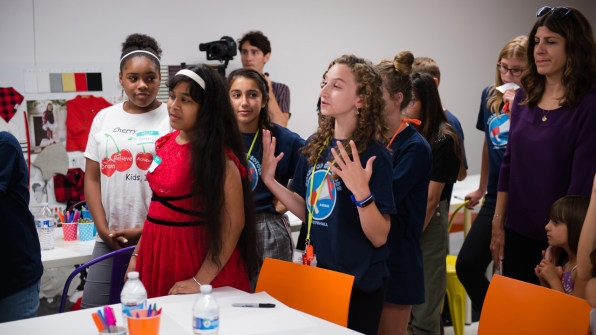
And in the case of the daylong kids’ board meeting last week, she meant this literally. The event coincided with Kidbox’s second birthday, so the day ended with a party that involved tons of cotton candy and black-and-white cookies, which meant a lot of sticky fingers.
But it wasn’t all fun and games. The day was filled with long discussions about how to better innovate in the realm of kids’ style. One of the main areas where Kidbox needed input from these young board members was for a new set of private-label brands that the company is producing. Starting today, the brand will be incorporating these clothes that are designed and manufactured in-house, alongside clothes from other brands. And unlike many children’s clothing brands that do not get direct input from those who will wear the products, Kidbox’s new line was cocreated with kids from the board.
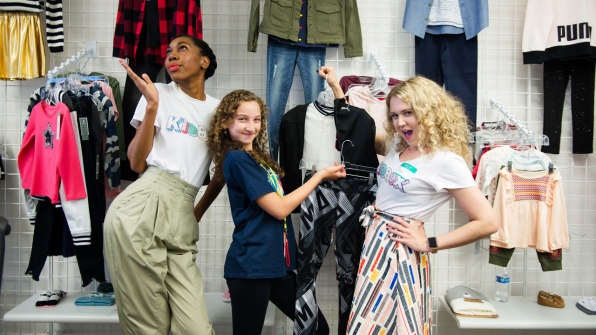
While the market is flooded with kids’ apparel brands, Kidbox has found that there’s still a gap for affordable, well-made clothes. Most parents don’t want to spend a lot of money on their children’s clothing since they will grow out of them quickly and are likely to get them dirty when they play, so they end up with a lot of cheap, poor-quality clothing. But when Kidbox gathered feedback from the kids’ board, they found that kids actually do care about the softness and feel of the clothes they wear. They also responded well to clothes that are not particularly gendered, which is quite different from the avalanche of over-the-top girly or boyish clothes that you find in the kids’ aisle. Among the clothes in the new Miki B line (named after the CEO herself), there are simple black long-sleeve shirts and camo pants that would look great on kids of any gender as they head back to the school in the fall.
At the daylong board meeting, after discussing the clothes themselves, the kids came up with ideas about how to provide an exciting unboxing experience for both the parents and their children. For instance, they suggested including some sort of hands-on activity in the box, like an arts and crafts project that a family can do together. “We’ve heard from our customers that 90% wait to open the box with their kids,” Berardelli says. “It’s kind of a bonding experience. So we’re trying to incorporate elements of personalization for the parent and the child.”
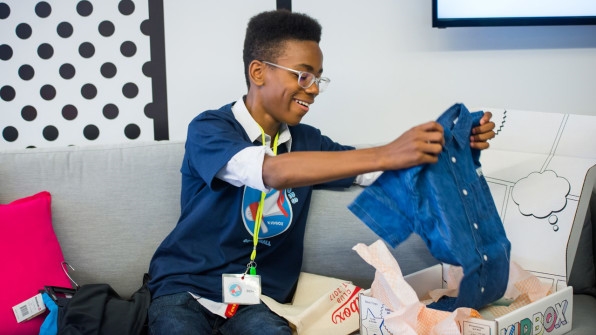
After a morning full of these business meetings, this year’s kid board members had a chance to pitch ideas about creative community service initiatives in their hometown in a Shark Tank-like format before of a panel of judges that included Kidbox founder Haim Dabah, CEO Berardelli, and Brooklynn Prince, the star of the movie The Florida Project and a Kidbox ambassador.
The 12 members of the kids’ board were picked because of their remarkable achievements in their communities. Nine-year-old Jayden Perez, for instance, organized a toy drive in his hometown of Woodland Park, New Jersey, and then hand-delivered 1,100 toys to hurricane victims in Puerto Rico. Twelve-year-old Addisyn Maree Goss, from Linden, Michigan, created Snuggle Sacks, a survival kit for the homeless. Eight-year-old Ella Tryon from Cleveland has donated more than 29,000 boxes of crayons to pediatric patients at hospitals around the country through her work with Help Me Color A Rainbow Foundation. “This generation is very tapped into social giving,” Berardelli says. “These kids show that you are never too young to make a difference.”
Being on Kidbox’s board is a serious responsibility. They will meet three more times throughout the year on a video conference call. But there are also some perks. At the New York meeting, they received their own Kidbox business cards. That’s pretty impressive, given that I had to wait until I was 26 to get a business card of my own.
(19)